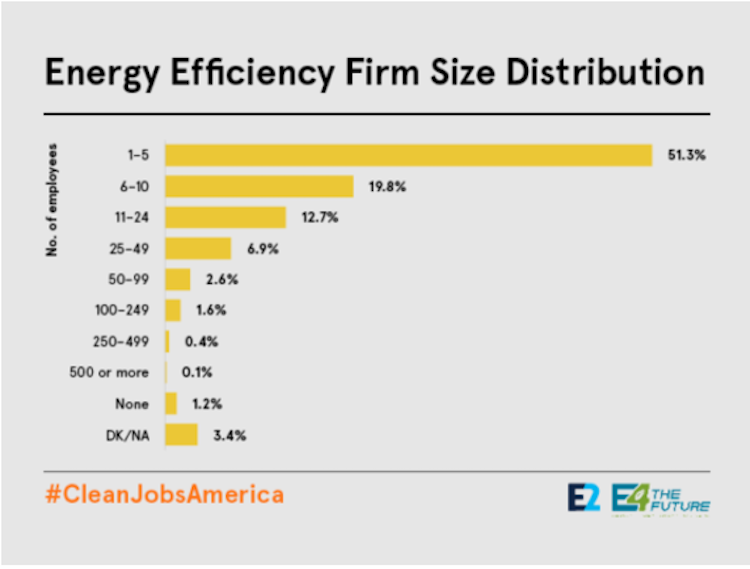
National EE programs support jobs, help families, & should not be cut
May 3, 2017
Home contracting and energy groups urge continued funding of key programs
National energy efficiency programs support jobs across the country and protect vulnerable families. But the White House’s initial budget outline suggests these programs might end up on the chopping block. So home contracting and energy efficiency groups are rallying to their defense.
“The Department of Energy says 2.2 million Americans work in the design, installation, and manufacture of energy efficiency products and services,” said Stephen Cowell, president of E4TheFuture, a nonprofit focused on energy issues. “Compare that to the 1.1 million who work in coal, oil, and gas combined, and you get an idea of how important this sector is for the American economy.”
More than 75% of products used in energy efficiency improvements are made in America and can’t be easily imported due to the product characteristics.
Recently, more than 2,400 energy efficiency professionals and supporters from 49 states and the District of Columbia sent a letter to the House and Senate Energy and Water Appropriations subcommittee leadership in support of efficiency programs.
“Contractors like me – all over America – are advancing energy efficiency, saving families and businesses money, cutting pollution, and hiring people in our community,” said Matt Hargrove, president of Total Home Performance, a home performance contractor located in Easton on Maryland’s Eastern Shore. “Washington’s support for the energy efficiency industry is not only important to help grow small businesses like mine but to the homeowners who have lower utility bills thanks to our work.”
Today, E4TheFuture’s Cowell and Brian T. Castelli, president & CEO of the Building Performance Association, will carry that message to Capitol Hill, telling the House Appropriations Subcommittee on Energy and Water Development about the importance of federal energy efficiency funding.
“Great ideas like the Weatherization Assistance Program, the Home Performance with Energy Star program and the State Energy Program are an investment in a stronger, more efficient economy,” Castelli said. “These programs help real families, in real communities across the country.”

According to a report by Environmental Entrepreneurs and E4TheFuture, small businesses employ the vast majority of workers in the energy efficiency sector.
A recent study from Oak Ridge National Laboratory found that every dollar spent on weatherization assistance yields from $2.30 to $4.10 in benefits. Since its creation, the Weatherization Assistance Program has helped over seven million low-income and rural Americans, who are especially vulnerable to volatile energy prices and utility bills. The program makes a real difference for families struggling to make ends meet. They are relieved to save energy and not have to choose between putting food on the table and paying the power bill.
